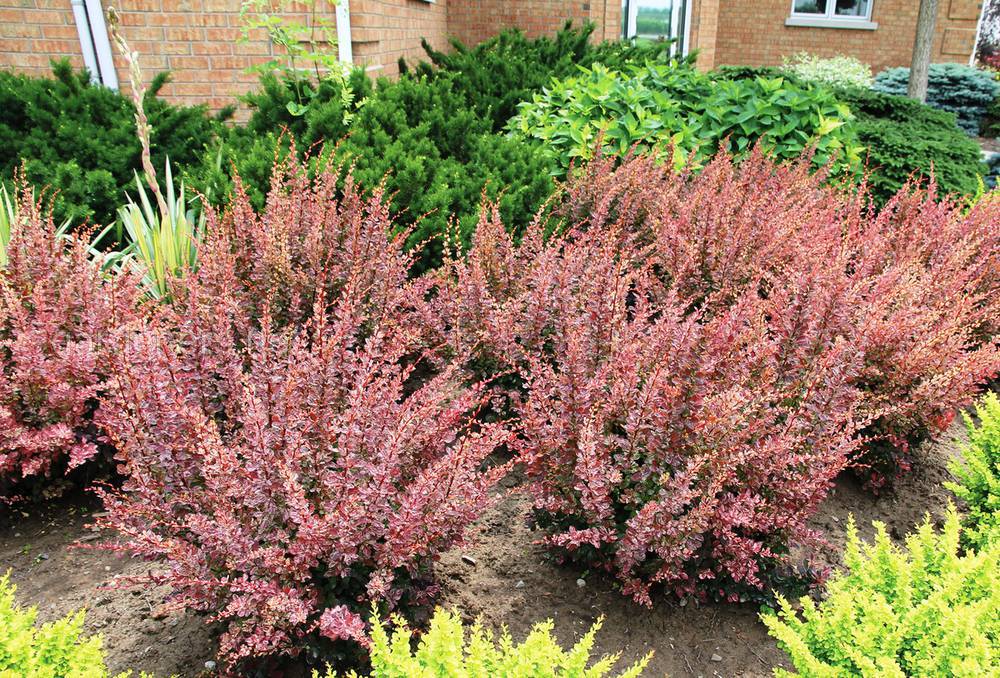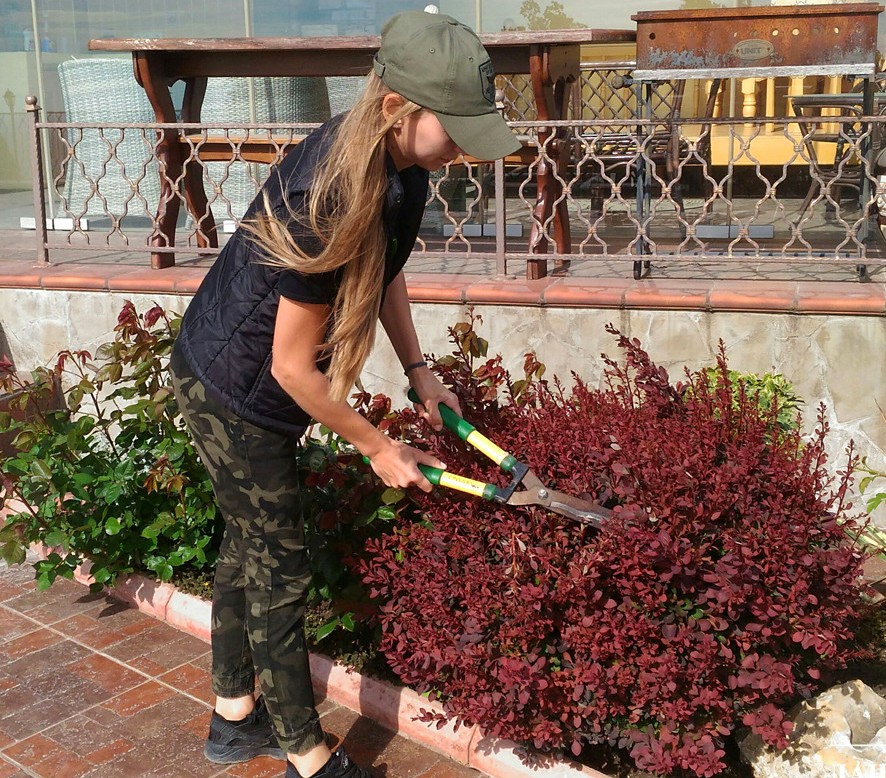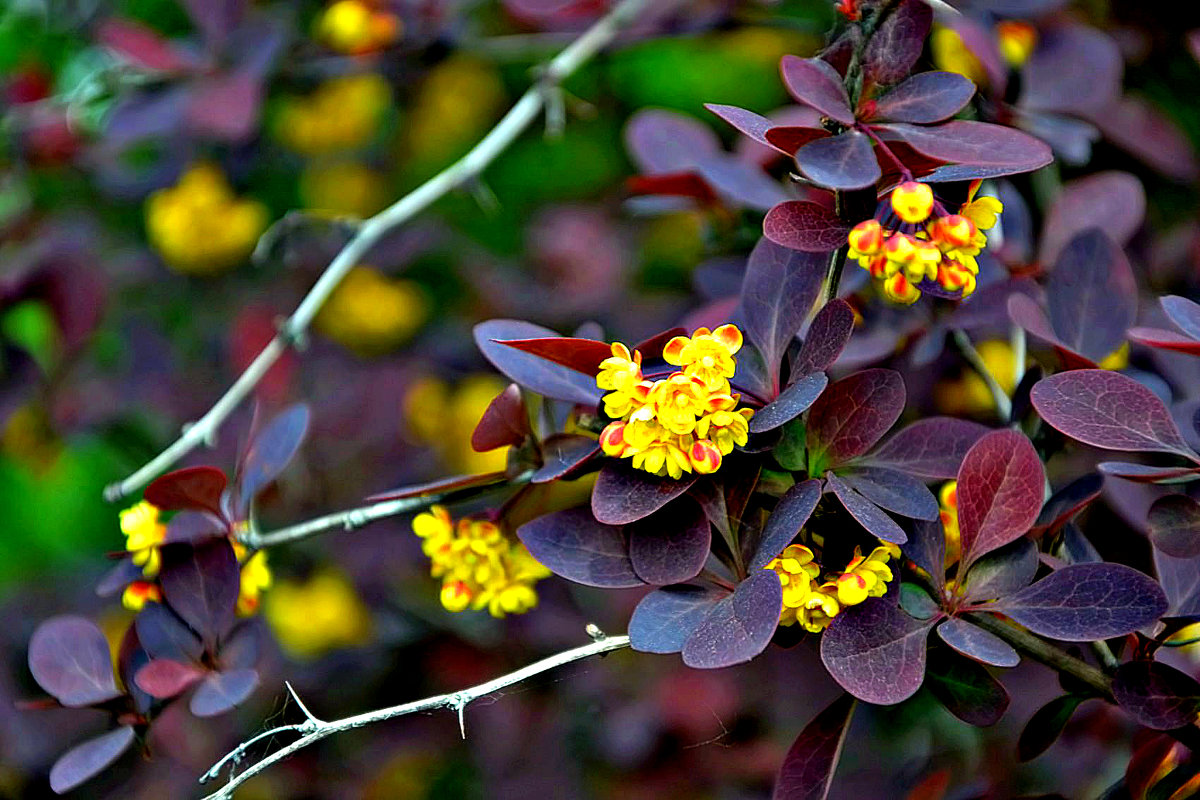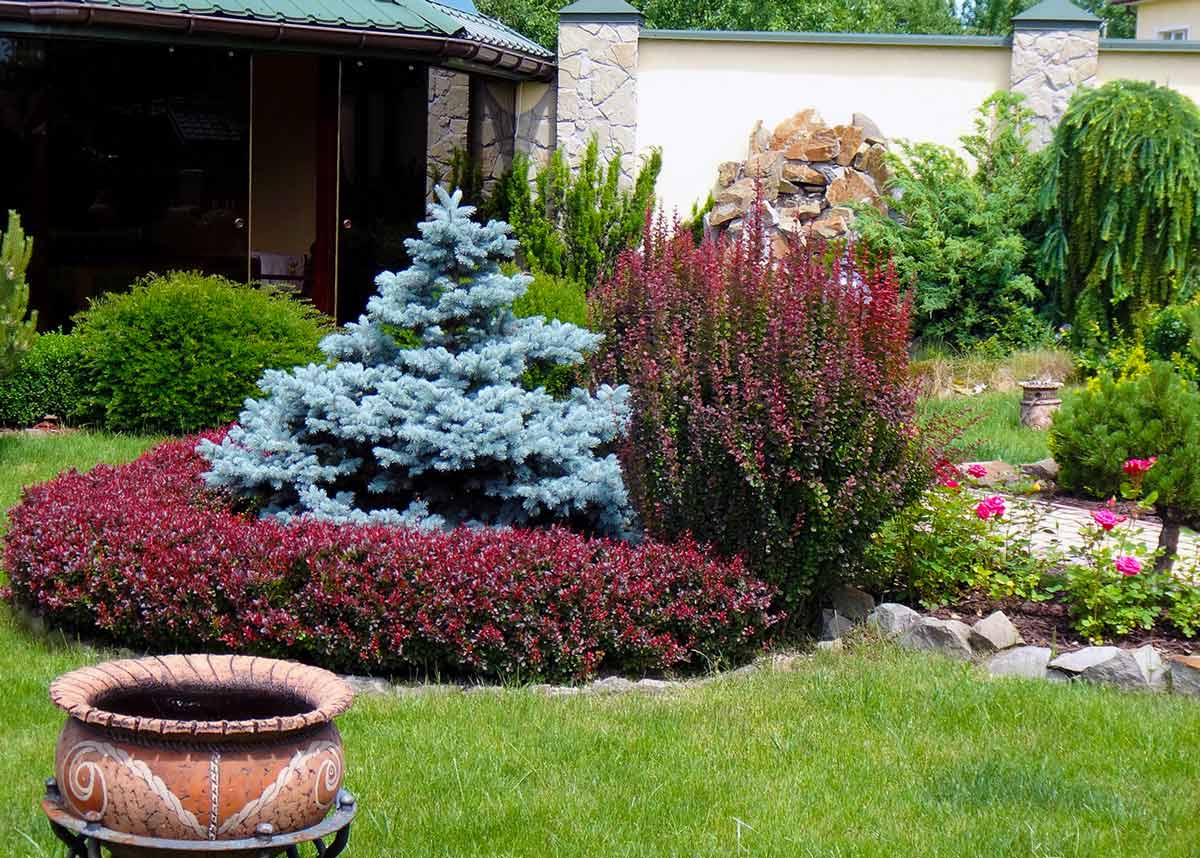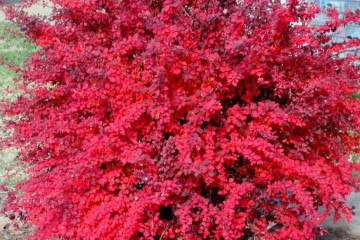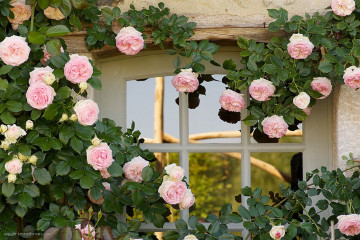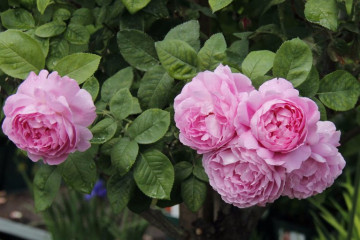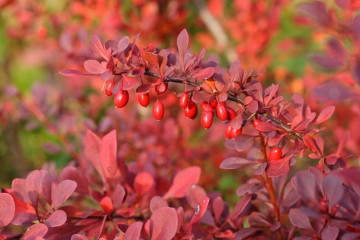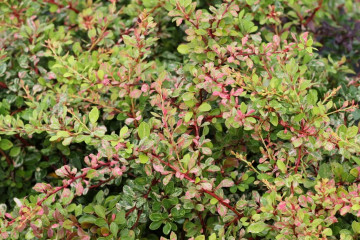Barberry Rose Glow - variety description and care
Content:
Among the barberry family, this variety occupies a special place. It is the Rose Glow barberry that often becomes a plant around which a lot of garden design solutions are born. Throughout the season, he not only pleases the eye with an extravagant purple color, but also surprises with the ability to add new colors and shades to his color.
Description of barberry Rose Glow
Barberry Rose Glow is a tall shrub, reaching a height of 1.3-1.5 m. The crown has a large diameter, sometimes up to 2 m. It is round and resembles a hemisphere. With normal plant care, it takes an average of 10 years from the moment of planting to reaching its maximum size.
The characteristic variegated color appears on the barberry from the moment the young shoots begin to grow. Annual seedlings give the plant an exotic look.
The flowering time of barberry falls on the end of May - the first half of June. The flowers are located along the entire length of the shoot, they are two-colored - inside the petals are yellow, outside are red.
The fruits of the shrub are elongated, bright red. They reach 1 cm in diameter. They ripen by the beginning of September, and in October they acquire a rich dark color.
Planting a plant
Rose Glow, like most Thunberg barberries, is undemanding to soil, but prefers slightly acidic soil with moderate moisture. The plant can be propagated both by planting seeds, and by layering or dividing the bush.
Planting from seeds
Seed propagation is not the best planting option, because the germination of the seed is small. After harvesting the fruit, you need to carefully separate the pulp and dry the seeds in the sun. Before planting in a container, they are disinfected in a solution of potassium permanganate.
For germination, it is recommended to take a container with a mesh depth of 3-5 cm. The seeds are buried to a depth of 1 cm. The watering regime is moderate. The soil should be moist without stagnant water.
After emergence, the film or glass is removed and the container is placed on a windowsill. The optimum temperature is 18-20 ° C. In the spring, after a hardening period, the plant is transplanted into a larger container with a slightly acidic soil substrate (no more than 6.5 pH).
For the winter, when the outside temperature at night drops to 13-14 ° C, the barberry is brought into a heated room. During this period, watering is significantly reduced and the plant is allowed to rest by placing it in a room with a temperature of 15-17 ° C. From the end of March, the watering of the barberry is increased and more light is given, so that in a month it can be planted in open ground.
Planting seedlings in open ground
For self-cultivation, it is recommended to plant the plant at the age of one to two years. Planting is carried out in the first decade of May, when the air temperature has reached 17-20 ° C, and the soil has already warmed up enough.
A sunny, but not windy place is chosen for disembarkation. A pit of 50x50 cm is dug for planting, up to 40 cm deep. The bottom is covered with a 5-7 cm layer of sand. A sand cushion will wick away excess moisture well.Before planting, the bush is recommended to stand for 4-6 hours in Kornevin's solution. Such treatment will allow the plant to quickly restore the root system.
It is best to fill the planting hole with a mixture of compost, sand and turf in a ratio of 1: 1: 1. It is also advisable to add 250-300 g of lime to the soil in order to normalize the acidity of the soil. After planting, it is necessary to water the seedling with 10-12 liters of water at room temperature.
When planting in a row between plants, you need to maintain a distance of 1.5-2 m, and for the formation of a hedge from barberry it is recommended to reduce it to 1.2-1.4 m.
How to care for barberry Rose Glow
Barberry is considered an unpretentious shrub and is often used for landscaping areas adjacent to highways, but when caring for it, you still need to know some of the nuances.
Watering
In the first year, watering is essential for good rooting of the plant. The usual volume of water is 10-12 liters once every 7-10 days. In hot weather and during drought, the amount of watering remains the same, but the time between them is reduced to 5-7 days. In a dry year, it is imperative to loosen the root soil.
Top dressing
For young plants, fertilization is carried out during the period of bud swelling and after the start of shoot growth. As a top dressing, a solution of urea (rich in nitrogen) or organic fertilizers is used.
In September, Rose Glow barberry bushes are fertilized with a dry mixture of superphosphate and potassium sulfate. Top dressing is closed up by loosening.
Organic fertilizers are used every 3 years. For this, slurry or infusion of bird droppings is used. After fertilization, it is not necessary to water the shrub with water.
Pruning
The first pruning can be done 2 g after planting. Preventive pruning in the first 4-5 years is recommended to be done twice a year. Frozen shoots are removed in spring, dried shoots are removed in autumn. From the age of 3 years of age, pruning is done at any time to form the crown.
Reproduction methods
Barberry can be propagated by layering, dividing the bush or using the seed method. Reproduction by layering is considered the most effective. In this case, the plant is guaranteed to inherit all the characteristics of the variety.
For layering, young annual shoots are chosen, which in the middle part are pulled to the ground with staples. The ends of the shoots are set vertically, and the place, pressed by the brackets, is covered with soil. By the end of the season, a full-fledged root system of a new bush develops under a layer of earth.
When propagating by cuttings on a young shoot, a cutting is cut into 5-7 buds. The bottom 3-4 buds are placed in the ground, and the rest are left on the surface. The soil is watered abundantly, and the cutting is covered with a glass jar. After 21-28 days, young shoots should germinate on it, and the root system has already formed on the underground part by this time.
Transfer
A young Rose Glow barberry bush is transplanted with an earthen clod. For plants 5-7 years old, it is recommended to simultaneously divide the bush. At the age of 10 and older, barberries are transplanted in the second year after pruning at the root.
Diseases and pests
Most harm to the Thunberg barberry Rose Glow is caused by the barberry aphid. Fight the insect quickly and ruthlessly. For this, the drug Aktara is used. The plant is sprayed immediately after a lesion is detected, and then 2-3 times after 3-4 days.
Often the plant is affected by powdery mildew, rust, bacteriosis and spotting. From the first symptoms of the disease to the complete loss of foliage, it usually takes 4-5 days, so you need to act quickly. For treatment, drugs Actellik and Match are used.After the first treatment, it is repeated after 5-7 days.
Flowering period
Abundant flowering begins in mid-May, when good warm weather sets in. Its duration is 21-28 days.
Before flowering, barberry is fed with complex mineral fertilizers at the rate of 1 tbsp. spoon on the bush. They are poured over the soil and mixed with it using shallow loosening. Then watering is carried out.
Preparing for winter
In the fall, after the leaves have fallen off, the barberry must be cut off. The leaves are collected and removed. Organic fertilizers are applied to the root space of the bush and covered with mulch.
In areas with unstable snow cover, young bushes are pressed to the ground and covered with spruce branches. Adult plants are wrapped in agrofibre.
Use in landscape design
When landscaping, Thunberg barberry (berberis Thunbergii Rose Glow) is most often used as the main plant of the composition. The bright purple color of the leaves of its perennial shoots is diluted over time with a variegated palette of young branches. The splash-like spots contrast perfectly with the well-defined pink and white lines on the leaves.
Today, barberry is most often used as a solitary plant in a Japanese garden or on an alpine slide. In this case, several plants are planted with a similar color, but a clearly perceptible difference in the color and tone of the foliage. Several bushes, planted in a row, are used instead of hedges for zoning the site.
Beneficial features
Rose Glow barberry is not only a vibrant ornamental crop, but also a plant known for its beneficial properties. It is used to strengthen the immune system and lose weight. Decoctions from fruits, leaves or roots are used for inflammatory diseases of the gastrointestinal tract. Means from barberry berries perfectly relieve spasms and soothe pain, they help with colds and strengthen blood vessels.
Gardeners love Rose Glow barberry for its unpretentiousness and endurance, the ability to use it as a hedge and decorate landscape compositions. With proper care and timely preventive procedures against pests and diseases, the plant pleases the owners with its colorful appearance for a long time.

